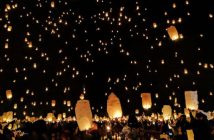After exploring Mandalay, we headed for Bagan. This ancient city is sometimes described as Myanmar’s Angkor Wat, and was the capital of a great kingdom that rivaled the Khmer Empire to the east. It’s smaller than the Angkor Wat complex, but less commercialized, and is a must-see for anyone visiting Myanmar. But first, we had to get there.
Myanmar developed mostly along river valleys with mountains in between. Transport infrastructure is still relatively undeveloped, with few railway lines and most roads little more than dirt tracks. So we opted for a boat trip down the Irrawaddy River. The journey takes eight hours but is substantially cheaper than flying and more comfortable than going by road.
We bought tickets immediately on arrival at the airport and were relieved to find later that the office there was genuinely offering the best price: USD 45 (and half-price for our 10-year-old). This includes breakfast (it’s an early start), a reasonable lunch and a piece of cake and fruit in the afternoon. Tea and coffee are served free all day, and soft drinks and beer can be purchased.

Disembarking at Yandabo
Our boys were a little bored, so books and perhaps an iPad or other entertainment is recommended. However, my wife and I enjoyed dozing on our bamboo chairs in the cool river breeze. Shortly after lunch, there’s a stop at Yandabo. This otherwise undistinguished village specializes in making cooking pots, and although there are a few souvenir stalls, the locals were happy to invite us into their workshops, without pressure to buy anything.
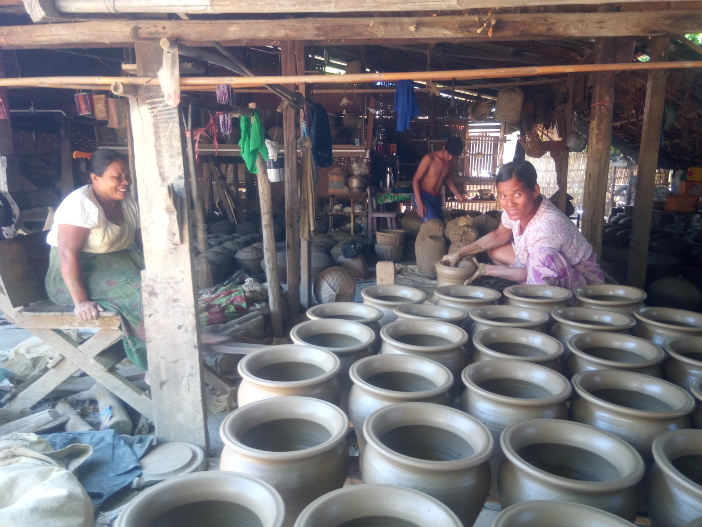
The villagers of Yandabo invited us in to their workshop
On arrival at Bagan, taxis are waiting, and charge an exorbitant and non-negotiable fixed price to take you anywhere. And the first stop is around the corner, to a checkpoint where you are required to pay a fee in cash just to enter Bagan. At the time this felt like, as my 14-year-old put it, a “shakedown”. However since the temples and stupas are dotted all around the town, there would be no practical way of charging admission to them, and the money is used for the upkeep of the monuments. So just make sure you bring enough money with you.
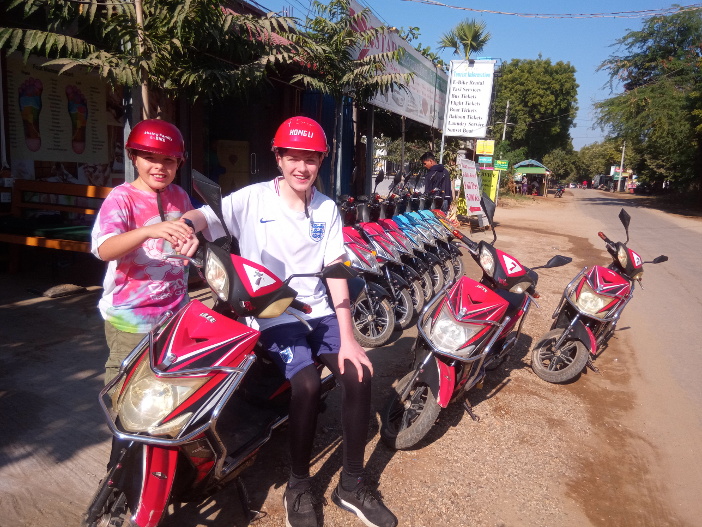
Hiring e-bikes in Bagan
The best way to get around Bagan is by e-bike. This would not be an option for families with younger children, and the alternative is to hire a taxi or tuktuk for the day. However, the bikes cost a very reasonable USD 3.50 per day and gave us the freedom to explore at our own pace. Our 10-year-old rode on the back of my bike, while our 14-year-old, an experienced cyclist, was delighted to have his own. You have to ask for helmets, which are not routinely offered (or used). The roads are mostly in good condition, although on the way to Dhammayangyi we hit a patch of deep, soft sand and I lost control of my bike. We were traveling slowly enough that I was able to stop safely, but caution is advised on the back roads.
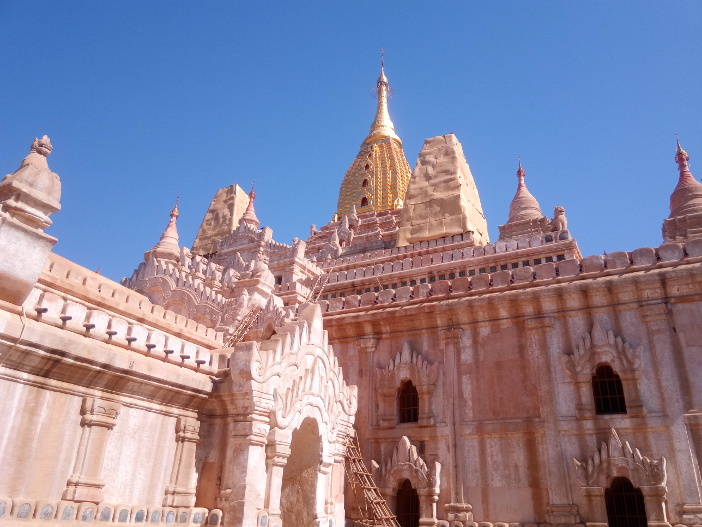
Ananda is possibly Bagan’s most beautiful shrine
After four years in Asia, my sons’ tolerance for temples is worn thin, so we negotiated an itinerary based on seeing four key sites, with the option of stopping at anywhere along the way that looked interesting. Ananda is the most beautiful of the temples; Dhammayangyi the biggest. Shwesandaw was described online as a temple which visitors could climb, but when we visited it was closed off… I’m not aware that any of the monuments can still be climbed, and I don’t think it’s a sustainable future for 700-year-old structures.
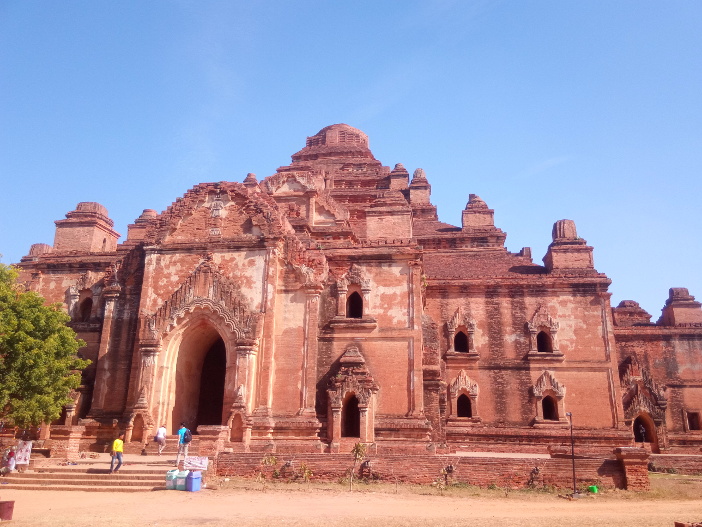
Dhammayangyi is the largest of Bagan’s ancient temples
Shwezigon, the last stop on our tour, was the busiest and most active temple, but also perhaps the most disappointing. Apart from the shining gold stupa, stunning against Myanmar’s deep blue sky, it was grubby and crowded. However it was interesting to see shrines to the Nats, the Bamar people’s traditional guardian spirits.
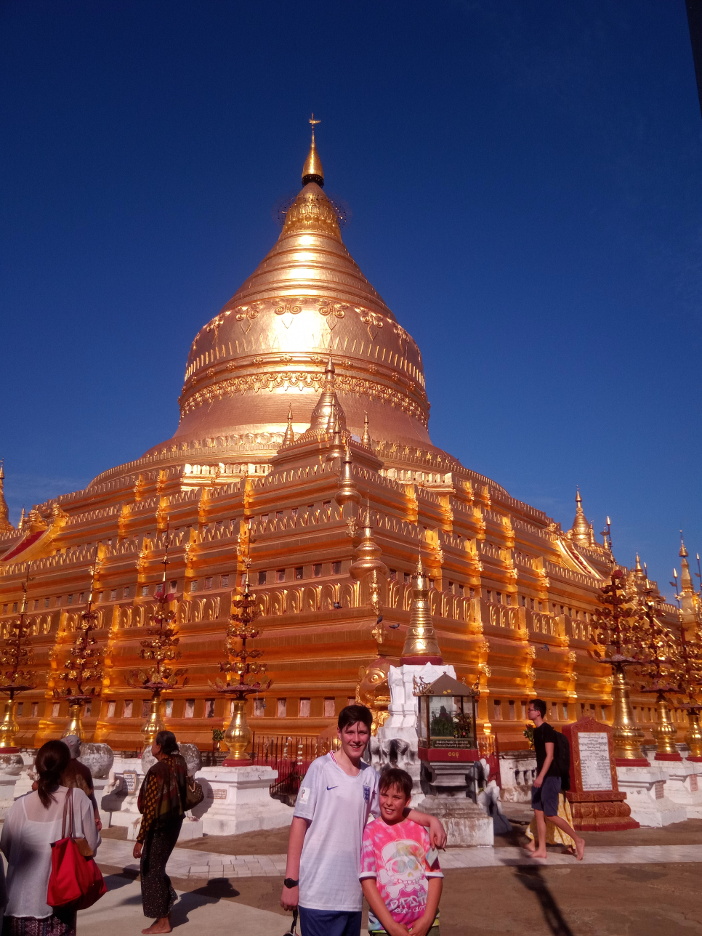
The golden stupa at Shwezigon was the model for Yangon’s famous Shwedagon
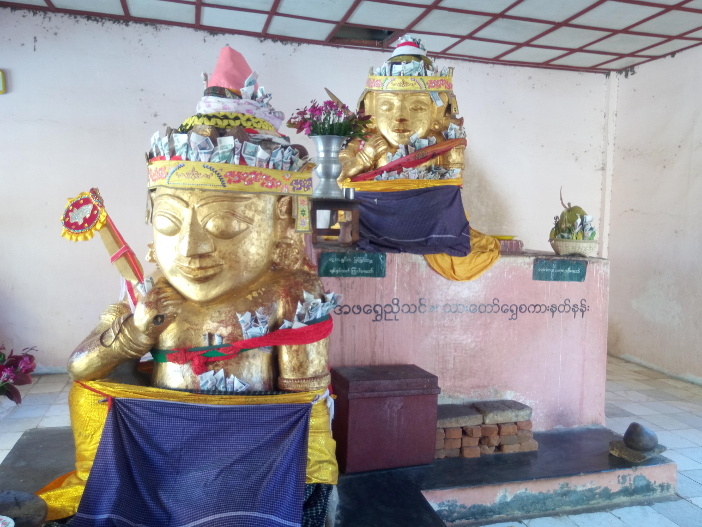
In Myanmar, Buddhism is practiced alongside the worship of protector spirits called Nats
We were disappointed also by the Royal Palace, which we paid extra to see, but which turned out to be a modern reconstruction on the site of an ancient ruin. Overall however Bagan was a fabulous experience, rich in extraordinary buildings, and with plenty of restaurants and bars to serve a tourist trade which will surely increase every year. Living in China offers an opportunity to see this extraordinary place before it becomes as crowded as Angkor Wat – don’t miss it.
Photos: Andrew Killeen



